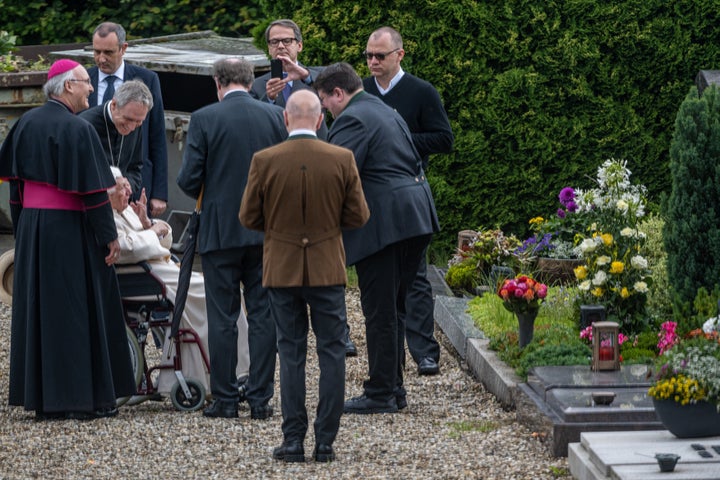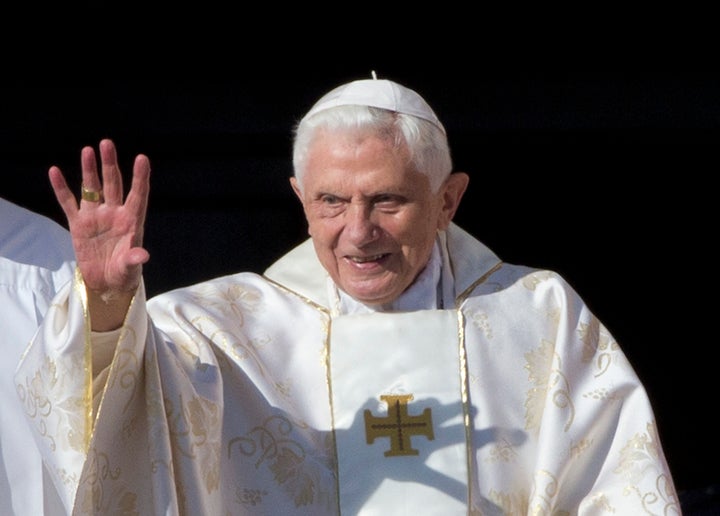
Pope Emeritus Benedict XVI, the German Catholic traditionalist who became the first pope in almost 600 years to resign, has died at age 95.
He became pope in 2005 ― earning the power to discipline ministers and the nickname “God’s Rottweiler” for upholding church doctrine.
Benedict’s attempts to bring the church back to its core values endeared him to conservative Catholics, but a series of sex abuse scandals that came to a head during his papacy cast a shadow over his legacy.
In a statement on Saturday morning, Vatican spokesperson Matteo Bruni wrote: “With pain I inform you that Pope Emeritus Benedict XVI died today at 9:34 in the Mater Ecclesia Monastery in the Vatican. Further information will be released as soon as possible.”
Benedict’s remains are set to be displayed beginning Monday at St. Peter’s Basilica, and Pope Francis is expected to celebrate the pope emeritus’ funeral Mass on Thursday.
Born Joseph Aloisius Ratzinger in the small town of Marktl am Inn, Bavaria, on April 16, 1927, he became interested in becoming a priest when he met the archbishop of Munich at age 5. He began studying for the priesthood when he was 12 years old.
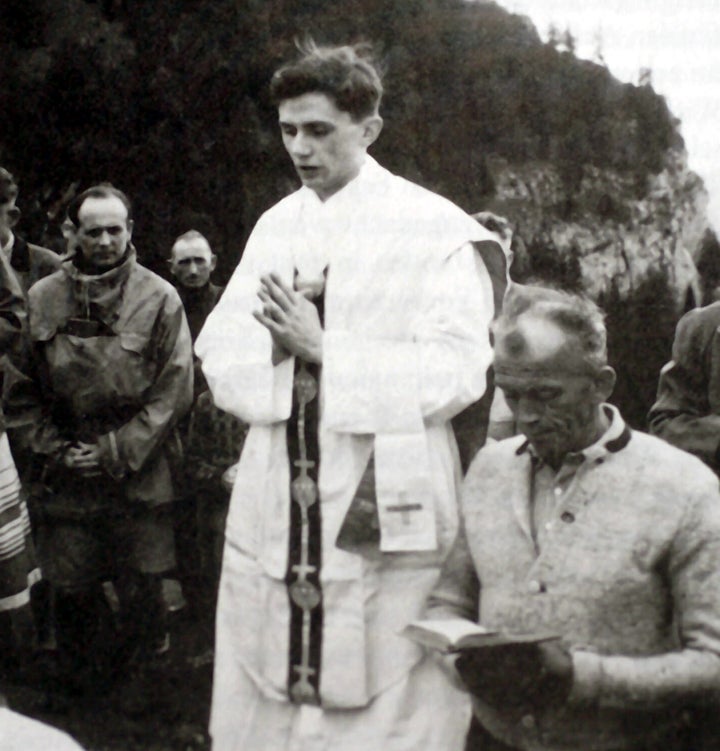
Ratzinger grew up as the Nazis came to power in the 1930s. He joined the Hitler Youth group after his 14th birthday because it was mandatory, but he refused to attend meetings, his older brother, Georg, told The Associated Press in 2005.
In 1943, he was drafted into the anti-aircraft corps as a Luftwaffenhelfer, or child soldier, but deserted the army and returned home in April 1945 without firing a shot. The U.S. Army set up local headquarters in his parents’ farmhouse near Traunstein soon after.
In November 1945, he entered the seminary in Freising, where he and Georg were ordained as priests in 1951.

Ratzinger gained his first doctorate at the University of Munich in 1953 and earned his teaching license in 1957. One year later, Freising College appointed him as a professor to teach dogma and fundamental theology. By 1963, he was teaching at the University of Muenster.
He was regarded as a reformer when he took part in the Second Vatican Council — which addressed relations between the Roman Catholic Church and the rest of the world — from 1962 to 1965.
In 1966, he was appointed to a chair in dogmatic theology at Germany’s leading theological faculty, the University of Tübingen.
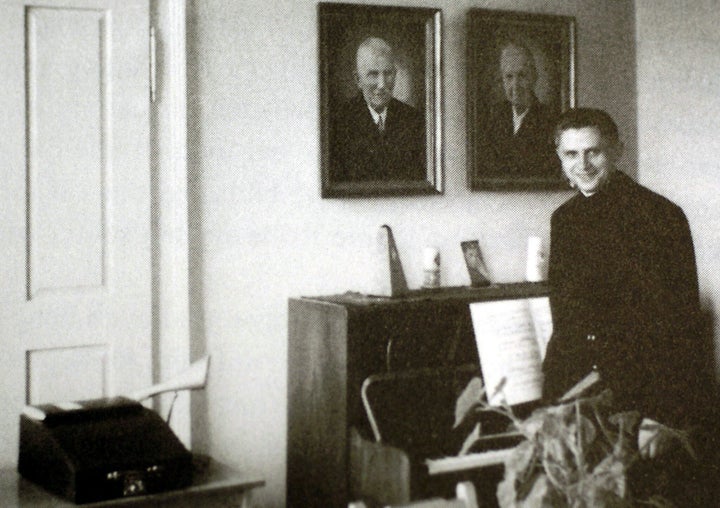
The year 1968 marked a turning point for the future pope, who transformed into a conservative dogmatist after radicalized students organized sit-ins against teachers ― like himself ― who did not endorse Marxism. The German news magazine Der Spiegel reported that some booed him during lectures, while members of the Protestant Students’ Union distributed fliers calling Jesus’ cross “a sadomasochistic glorification of pain” and the New Testament a “document of inhumanity, a large-scale deception of the masses.” Ratzinger later described the protests as a “traumatic memory.”
Ratzinger returned to Bavaria in 1969 to serve as a professor at the more conservative University of Regensburg, where he remained until 1977, when he was he was made archbishop of Munich and Freising. Later that year, Pope Paul VI made him a cardinal.
In 1981, he was appointed as cardinal-prefect of the Vatican’s doctrinal watchdog, the Congregation for the Doctrine of the Faith. In 1982, he resigned as archbishop to concentrate on reinforcing Catholic beliefs and teaching about topics including interreligious dialogue and reinforcing the church’s opposition to issues such as contraception, abortion and homosexuality.
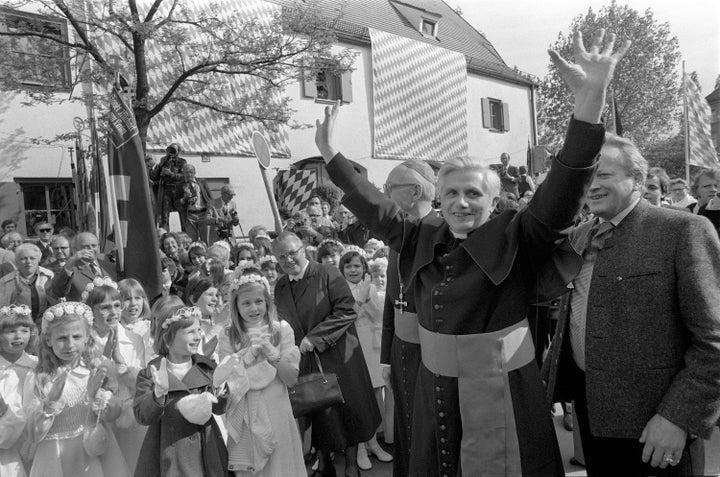
Pope John Paul II promoted Ratzinger again within the College of Cardinals to the position of Cardinal Bishop of Velletri-Segni in 1993. He was made the college’s vice-dean in 1998 before being elevated to dean four years later.
Ratzinger’s legacy was tainted in 2002 when The Boston Globe revealed how the church had covered up scores of child sexual assaults and moved abusive priests to other parishes, rather than defrocking them and reporting them to authorities.
In April 2005, Ratzinger became Pope Benedict XVI, the 256th pope; the oldest elected pontiff in nearly 300 years; and the first German pope in nearly 1,000 years. And further allegations of his obstruction of justice emerged.
The Observer newspaper reported that he had issued a 2001 order ensuring the church’s investigations into sexually abusive priests remained secret for up to 10 years after the victims reached adulthood.
Sex abuse claims plagued Benedict’s papacy, with victims around the world accusing him of failing to do enough to act against those trying to cover up thousands of cases that emerged during his reign.
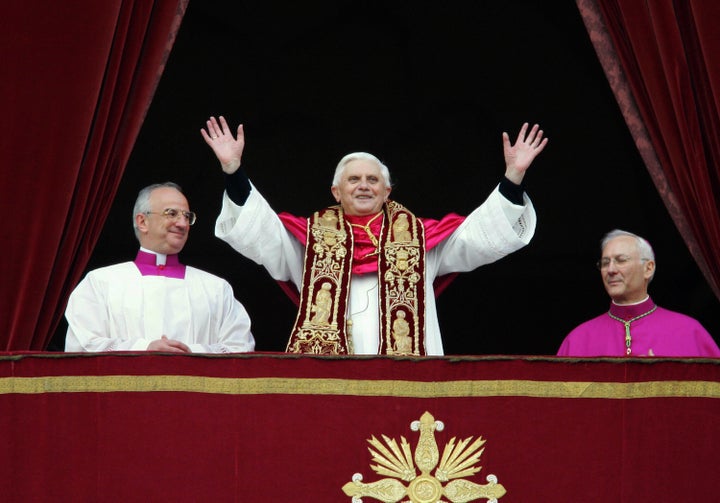
In 2008, Pope Benedict traveled to the United States following reports that the U.S. church had paid out $2 billion in settlements related to abuse cases dating back to 1950. “I am deeply ashamed, and we will do what is possible so this cannot happen again in the future,” he said at the time.
In 2011, the U.S.-based nonprofit group Survivors Network of Those Abused by Priests alleged in a lawsuit that Ratzinger “either knew and/or [in] some cases consciously disregarded information that showed subordinates were committing or about to commit such crimes.”
In addition to the sex abuse controversy, the conservative leader caused outrage in 2005 when the Instruction, his first major ruling as pope, banned gay priests and repeated the church’s view that “deep-seated homosexual tendencies ... are objectively disordered.” In 2012, he sparked outrage in the gay community again when he labeled same-sex marriage a threat to “human dignity and the future of humanity itself.”
Benedict earned the nickname “the green pope” for speaking often about the need to protect and conserve the environment. During a World Day of Peace message in 2010, he insisted that those who seek peace can’t disregard realities such as climate change, pollution and the growing phenomenon of “environmental refugees.”
“The Church has a responsibility towards creation,” Benedict wrote, “and she considers it her duty to exercise that responsibility in public life, in order to protect earth, water and air as gifts of God the Creator meant for everyone, and above all to save mankind from the danger of self-destruction.”
Pope Benedict became frail toward the end of his papacy and cited his failing health as his reason for stepping down as leader of the world’s 1.2 billion Roman Catholics in February 2013 at the age of 85. He kept his papal title instead of reverting to his birth name ― though he preferred to be known as Father Benedict.
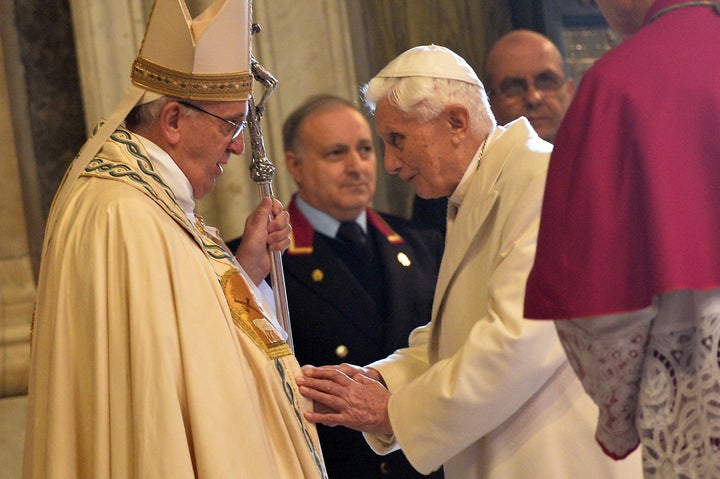
In November 2013, the pope emeritus broke his silence about attacks questioning his leadership during the sex abuse scandals when he responded to a critique from the Italian atheist author Piergiorgio Odifreddi.
“I never tried to cover these things up,” he wrote in the letter, which appeared in the Italian newspaper La Repubblica. “That the power of evil penetrated so far into the interior world of the faith is a suffering that we must bear, but at the same time, we must do everything to prevent it from repeating.”
The following year, the AP reported that Benedict had defrocked nearly 400 priests between 2011 and 2012 after in-house trials had determined they had sexually molested children.
In February 2014, the pope emeritus made his first public appearance after his resignation to attend his successor Pope Francis’ first formal meeting of cardinals at St. Peter’s Basilica. The pair met on several occasions after that. His other rare public appearances included the canonization mass of Popes John XXIII and John Paul II, with whom Benedict had worked closely.
Benedict pledged to live “hidden from the world” after retirement, but he chimed in to voice his own opinions during his successor’s papacy. His presence also served as a rallying point for clerics in the church’s conservative wing who are wary of Francis’ openness to change.
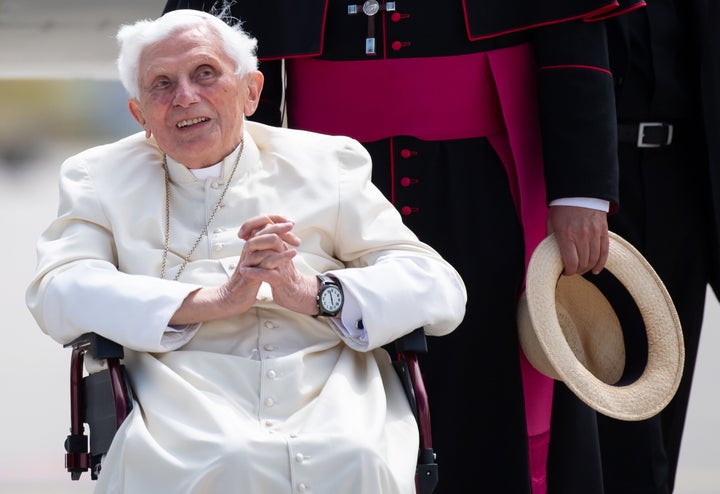
In 2019, Benedict published an essay partly blaming the church’s sex abuse crisis on the sexual revolution of the 1960s, undercutting Francis’ own efforts to lead the church through the scandal. And in January 2020, while Francis was deliberating whether to allow married men to be ordained in far-flung regions of the Amazon, Benedict contributed to a book defending the tradition of priestly celibacy. The book stirred considerable controversy, as it gave the impression that a retired pope was weighing in on matters before the current pope.
Benedict spent the last years of his life living at the Mater Ecclesiae Monastery in the Vatican Gardens, near St. Peter’s in the Vatican, where he would read, write letters, receive guests and occasionally play the piano.
Benedict made a four-day visit in June 2020 to Germany to see his ailing brother, Georg. During the trip, he spoke with old neighbors, prayed at the graves of his parents and sister, and celebrated Mass at his brother’s residence.
Decades after the brothers were ordained together, Georg died on July 1, 2020, at the age of 96.
